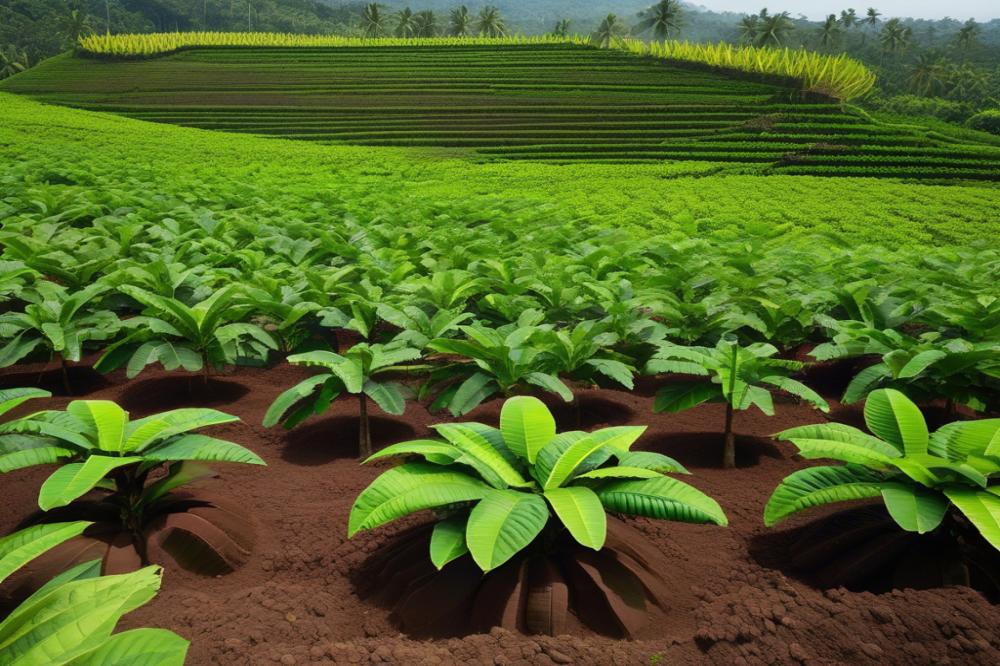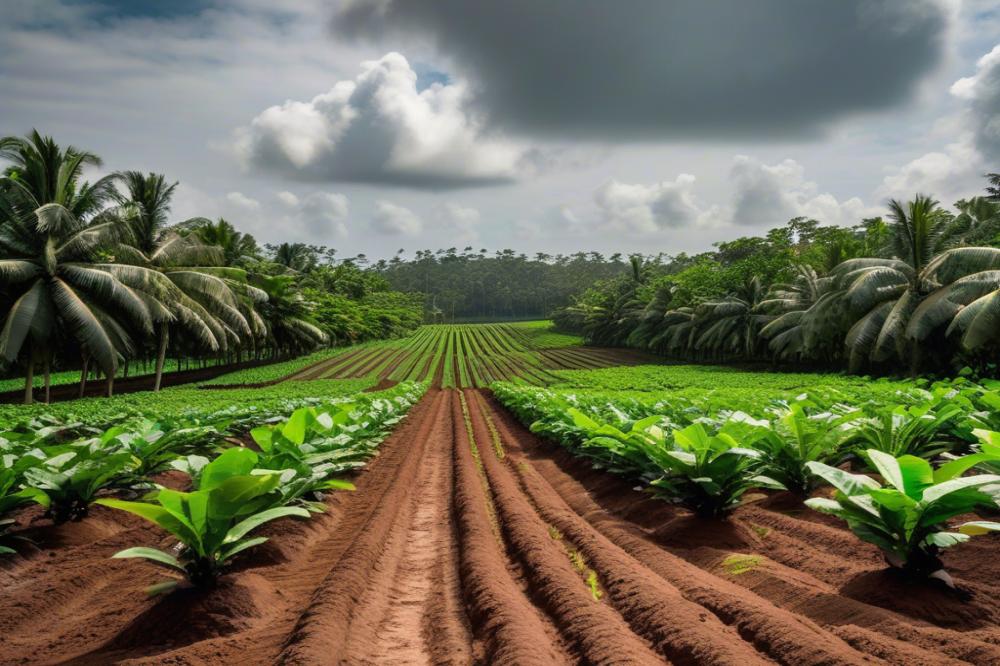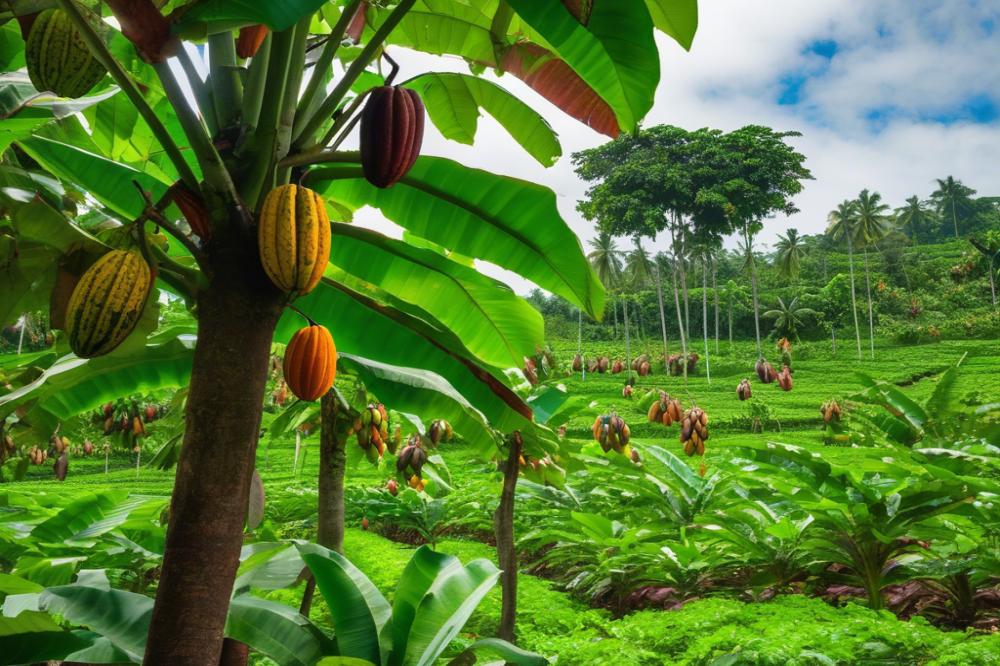The Role of Soil in cocoa cultivation: Best Practices
Cocoa is more than just a delightful treat; it plays a vital role in the economies of many tropical countries. Its cultivation supports millions of farmers while providing livelihoods surrounding agriculture. As consumers increasingly seek sustainable chocolate options, the environment also benefits from responsible farming practices.
Soil acts as the foundation for healthy cocoa trees. Its characteristics directly affect crop success. Factors such as soil fertility, pH level, and moisture retention are essential in determining how well cacao will grow. Farmers must manage nutrients carefully to keep the soil in optimal condition. This approach ensures that the trees receive what they need to thrive.
Practices like organic matter addition can enhance the soil’s ability to retain moisture. Healthy soil improves water infiltration and reduces the risk of soil erosion, which can be a significant issue in cocoa farming. Crop rotation is another effective method that preserves soil health. This practice reduces pests and diseases while enhancing nutrient availability.
Sustainable farming incorporates integrated agroforestry systems. Combining cocoa with other plants can promote biodiversity and reduce dependence on chemical fertilizers. Monitoring soil pH levels ensures that the conditions remain suitable for cocoa production. By focusing on these best practices, farmers can support strong yields and preserve the land for future generations.
Understanding Soil Properties for cocoa cultivation

Soil fertility plays a significant role in the growth of Cocoa plants. Nutrient management is essential to ensure that the crop receives the necessary elements for healthy development. A balanced mixture of macronutrients like nitrogen, phosphorus, and potassium, along with micronutrients, creates the ideal conditions for robust cocoa trees.
Moisture retention in soil cannot be overlooked. Cocoa plants thrive in humid environments, needing consistent water supply. Well-structured soil helps trap moisture while providing adequate drainage. By applying sustainable farming practices, farmers can improve moisture levels, which promotes growth and productivity.
Organic matter is crucial in enhancing the health of the soil. Rich compost and decomposed plant material feed beneficial microorganisms. These organisms improve soil structure, leading to better aeration and support for root systems. Practices like cover cropping and crop rotation contribute to building organic content and reducing soil erosion.
Analyzing the pH level is fundamental for optimal growth of cocoa. The soil should ideally fall between 5.0 and 6.5. When the pH is too high or too low, nutrient availability becomes limited. Farmers should regularly test their soil pH to address any imbalances. Using agroforestry techniques can also aid in stabilizing pH levels over time.
Nutrient Management for Cocoa Plants

Growing healthy cocoa plants relies heavily on proper nutrient management. Essential nutrients include nitrogen, phosphorus, potassium, calcium, magnesium, and sulfur. Each plays a specific role. For instance, nitrogen aids in leaf growth, while phosphorus contributes to root development.
Soil fertility is key for optimal cocoa production. Regular assessment of nutrient levels helps to identify deficiencies early. This proactive approach can guide interventions. agricultural practices such as adding organic matter enrich the soil. Organic matter not only boosts nutrients but also improves moisture retention.
Best Practices for Soil Nutrient Management
Adopting best practices leads to better soil health. Crop rotation is one effective method. By changing what is grown in a particular area, farmers can prevent nutrient depletion. Incorporating legumes can also benefit the soil. These plants fix nitrogen, enriching the ground for subsequent crops.
Sustainable farming techniques are crucial. Reduced tillage minimizes soil erosion, protecting precious nutrients. Implementing agroforestry systems can enhance biodiversity. Trees provide shade, which is beneficial for cocoa plants and supports ecological balance.
Techniques for Testing and Amending Soil Nutrients
Regular soil testing is vital. Sending soil samples to a lab helps determine nutrient levels and pH level. Knowing the pH is essential because it affects nutrient availability. After testing, amendments can be made to address specific deficiencies.
Adding lime can adjust pH levels when the soil is too acidic. Fertilizers can supplement missing nutrients. Organic options, like compost, are environmentally friendly. They not only provide nutrients but also improve soil structure.
Impact of Nutrient Management on Cocoa Yield
Effective nutrient management directly affects cocoa yield. Well-nourished plants produce more beans and have better quality. Healthy soils support robust root systems, enabling plants to withstand stress. This resilience translates to higher productivity and profitability.
In essence, a focus on nutrient management strengthens overall cocoa cultivation efforts. Farmers who prioritize soil health set the stage for sustainable success. Healthier soils lead to healthier crops, which benefits everyone involved in the cocoa supply chain.
agricultural practices for Sustainable Cocoa Cultivation

Crop rotation is an effective way to boost soil fertility. Farmers can grow different crops in succession. This method helps replenish essential nutrients. Rotating crops also reduces pest cycles.
Agroforestry integrates trees into cocoa farming. This practice improves moisture retention and provides shade. It creates a balance in the ecosystem. Trees can also enhance soil structure by adding organic matter.
Sustainable farming techniques play a crucial role in preventing soil erosion. Cover crops can shield the soil from heavy rain. These plants hold the soil together, reducing the risk of degradation.
Integrated pest and nutrient management offers several advantages. This approach focuses on maintaining a healthy ecosystem. It minimizes chemical use while maximizing the natural resources at farmers’ disposal. Proper nutrient management adjusts soil pH levels, ensuring plants have what they need to grow.
Maintaining Soil Health and Preventing Erosion
Understanding Soil Erosion and Its Effects on Cocoa Cultivation
Soil erosion is a major threat to crop production. When topsoil washes away, it takes with it vital nutrients. This can lead to decreased soil fertility. Without healthy soil, cocoa trees struggle to grow. Erosion can result in lower yields and affected quality. Understanding the impact of erosion helps farmers make better decisions.
Best Practices for Preventing Soil Erosion in Cocoa Fields
Farmers can adopt several important practices to combat erosion. Planting hedgerows along field boundaries acts as a barrier against wind and water. Using contour plowing aligns rows with the land’s natural shape. This reduces runoff and decreases soil loss. Additionally, building terraces on slopes can slow down heavy rainwater, allowing it to soak in. These methods collectively support sustainable farming efforts.
Importance of Cover Crops and Ground Cover in Soil Protection
Cover crops play a crucial role. These plants grow between cocoa harvests to maintain soil structure. They prevent erosion while adding organic matter to the soil. Ground cover reduces the impact of raindrops on bare soil. A well-maintained cover not only protects but also helps with moisture retention and nutrient management during dry spells. Moreover, a variety of plants can enhance biodiversity, attracting beneficial insects.
Long-Term Strategies for Maintaining Soil Health
Crop rotation serves as an effective long-term strategy. Alternating different crops every season helps balance nutrient levels in the soil. Regularly testing the pH level of soil provides insights into its health. This informs farmers what amendments are needed to enrich soil. Incorporating agroforestry practices can further improve soil conditions. Combining trees with cocoa plants enhances biodiversity and provides shade. Overall, consistent attention to soil health will yield better cocoa for years to come.
Final Thoughts on Soil’s Role in Cocoa Farming
The significance of soil in cocoa cultivation cannot be overstated. Healthy soil is the foundation for robust plant growth and ultimately influences the quality of the cocoa beans. It provides essential nutrients and a favorable environment for beneficial microorganisms. These elements work together to enhance soil fertility, which is crucial for producing high-yield crops that meet market demands.
Best practices in managing soil should not only be seen as recommendations but as essential steps towards ensuring successful harvests. Farmers must adopt these techniques to improve the health of their land. Implementing crop rotation, using organic fertilizers, and practicing soil conservation can make a noticeable difference. Each of these strategies contributes to building a more sustainable farming system.
The future of cocoa farming looks promising when sustainable agricultural practices are prioritized. Industry stakeholders, including farmers, researchers, and consumers, must unite to promote better methods. Commitment to these principles can lead to long-term benefits, such as reduced environmental impact and increased profitability. Ultimately, a collective effort can reshape cocoa production into a more sustainable endeavor.



